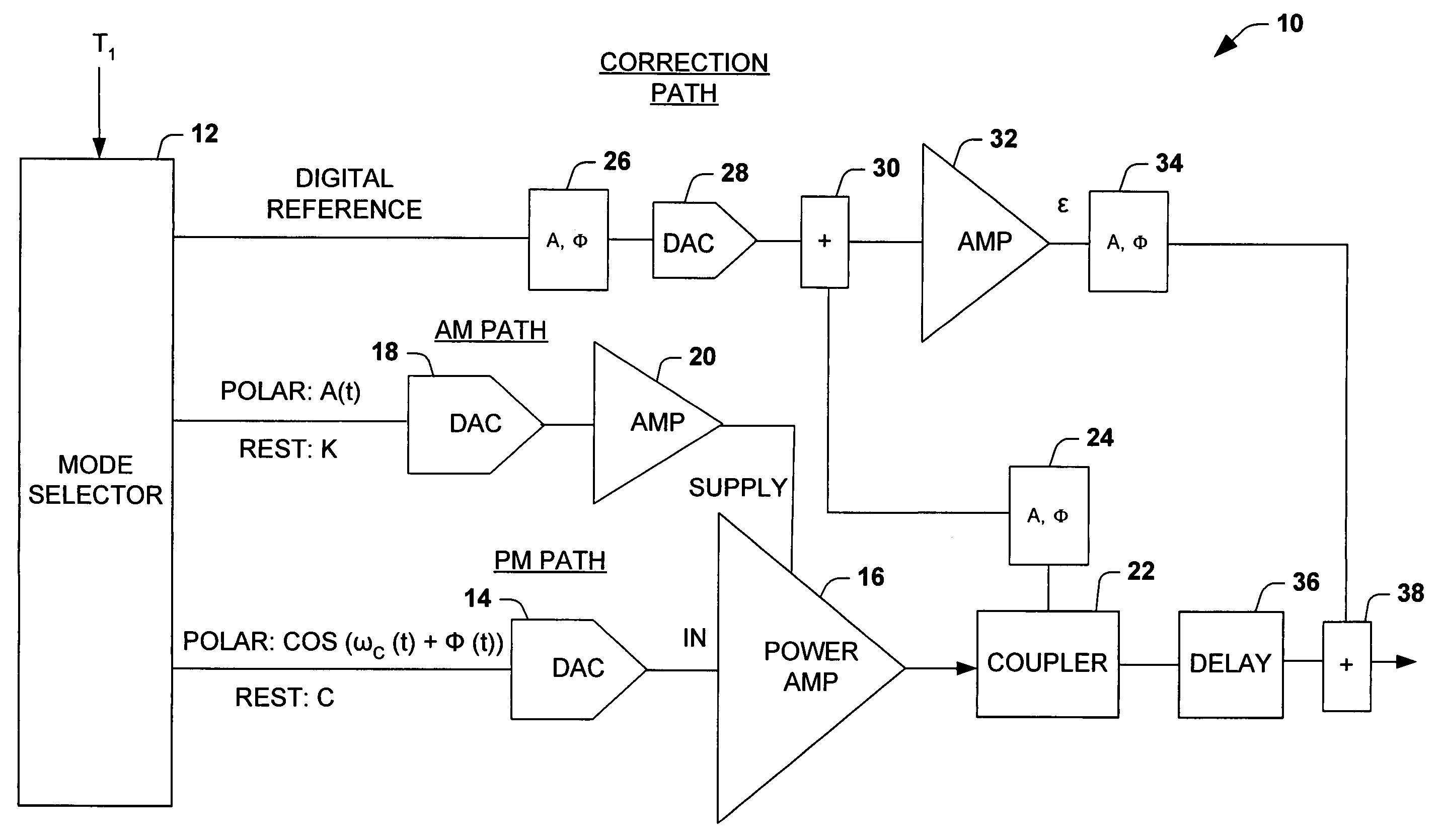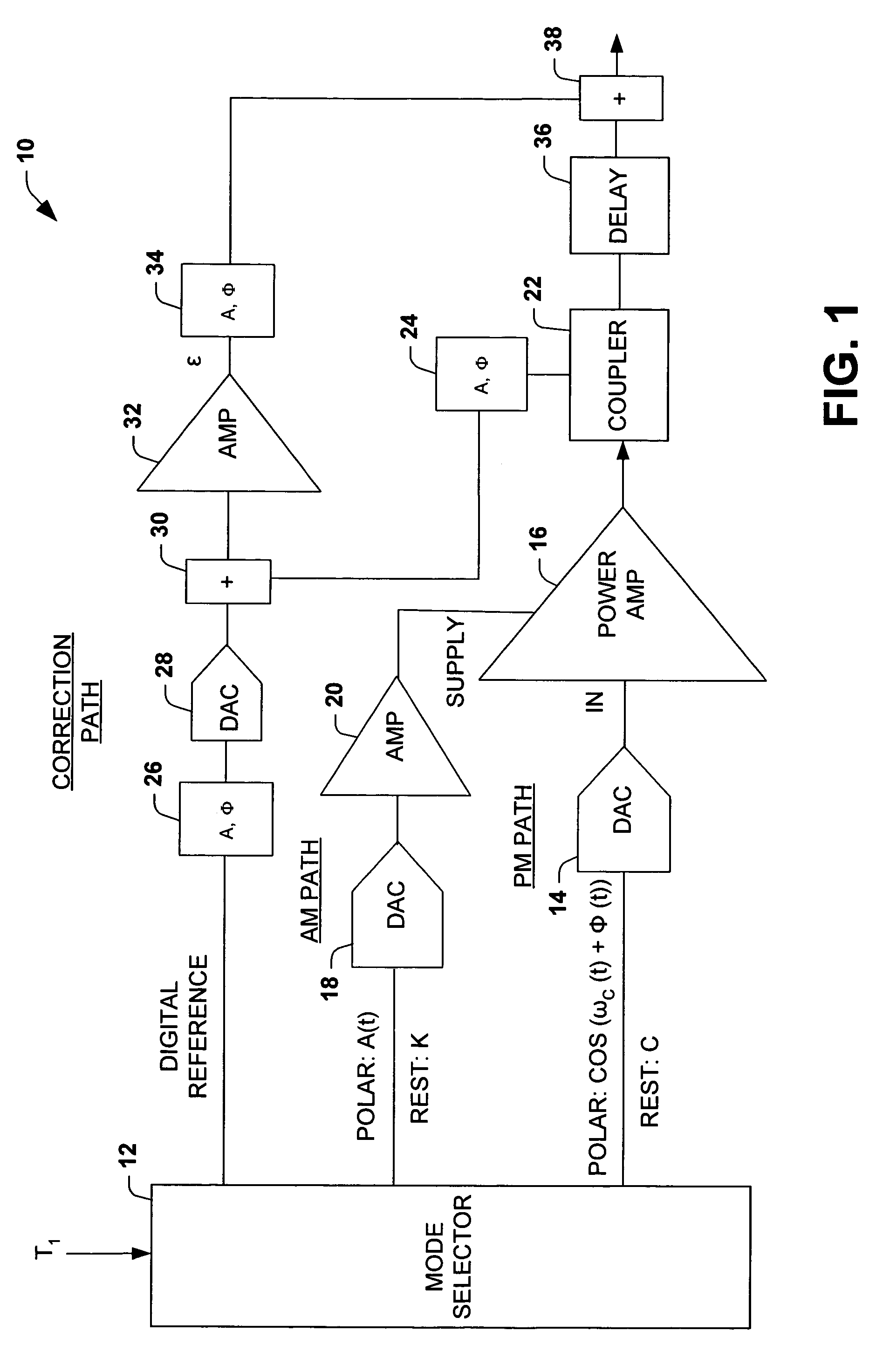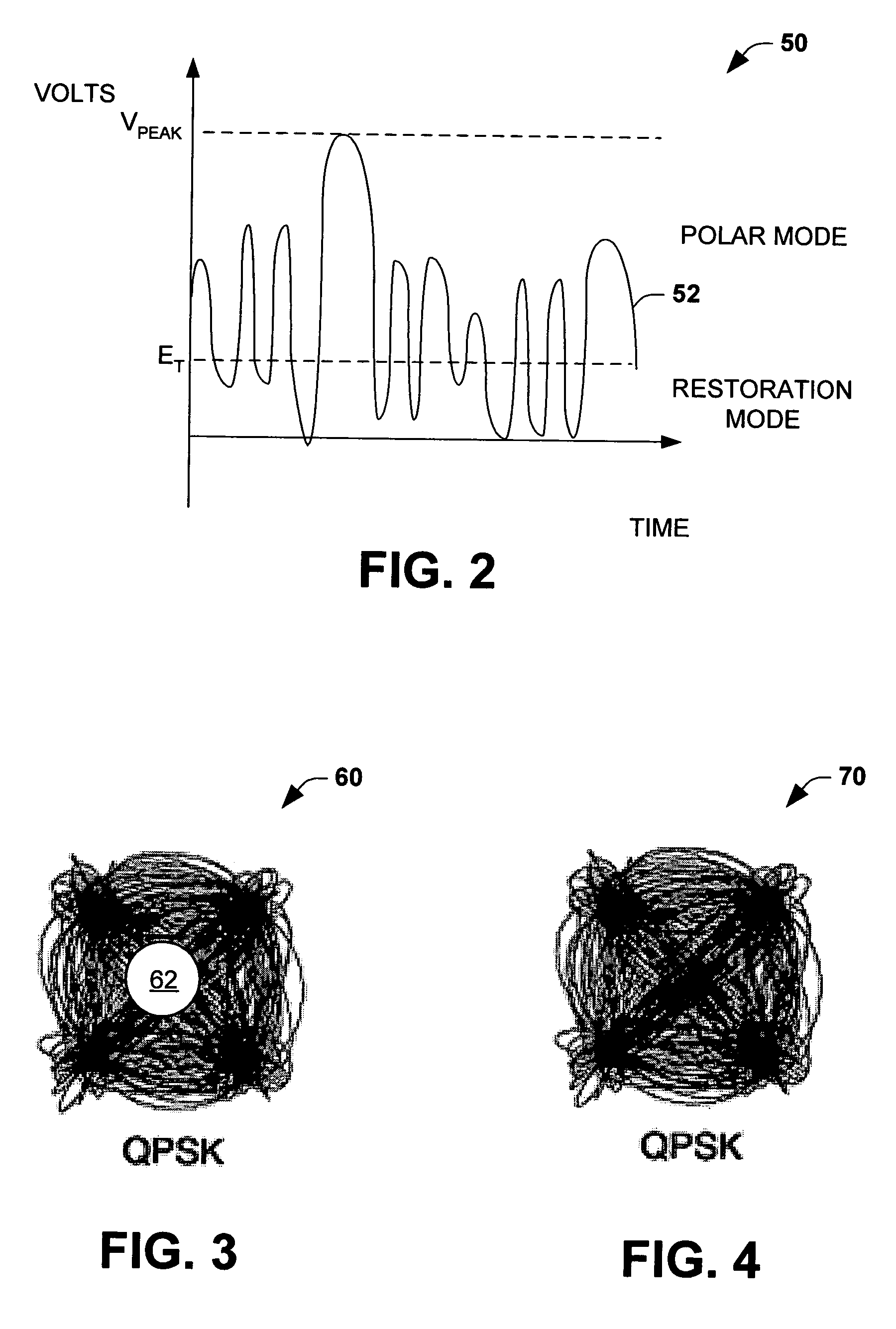Modified polar amplifier architecture
a technology of polar amplifiers and amplifiers, applied in the field of electronic devices, can solve the problems of linear amplifiers operating in these types of signals with very inefficient efficiency, the cost of the amplifier scales with its peak power, and the size and cost of the power amplifier are generally proportional, so as to achieve the effect of mitigating signal distortion and out-of-band (oob) emissions associated with the signal
- Summary
- Abstract
- Description
- Claims
- Application Information
AI Technical Summary
Benefits of technology
Problems solved by technology
Method used
Image
Examples
Embodiment Construction
[0018]The present invention relates to an amplifier system that switches modes of operation based on a characteristic of an input signal relative to a threshold level (e.g., envelope amplitude level, digital count representation of signal level, power amplifier power level). The amplifier system operates as a polar amplifier system (i.e., Envelope Elimination and Restoration (EER) technique amplifier) in one mode, and operates as a linear amplifier system via a separate correction path in a restoration mode.
[0019]In one aspect of the present invention, an amplifier system is provided that includes a correction path that corrects for wanted signal distortion and / or OOB emissions in a polar mode, and provides for signal restoration in a signal restoration mode. A mode selector (e.g., a digital component) determines whether polar components (“polar mode”) of the signal are sent to a power amplifier or whether constant or low level (approximately zero level) signals are provided to the ...
PUM
 Login to View More
Login to View More Abstract
Description
Claims
Application Information
 Login to View More
Login to View More - R&D
- Intellectual Property
- Life Sciences
- Materials
- Tech Scout
- Unparalleled Data Quality
- Higher Quality Content
- 60% Fewer Hallucinations
Browse by: Latest US Patents, China's latest patents, Technical Efficacy Thesaurus, Application Domain, Technology Topic, Popular Technical Reports.
© 2025 PatSnap. All rights reserved.Legal|Privacy policy|Modern Slavery Act Transparency Statement|Sitemap|About US| Contact US: help@patsnap.com



